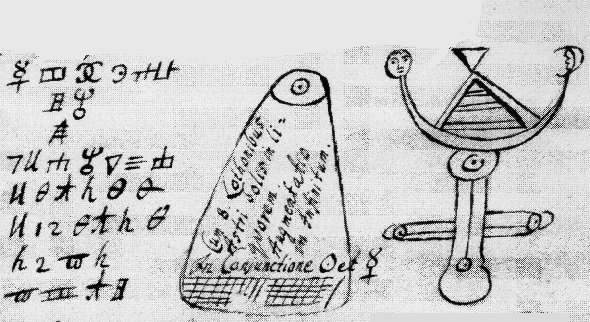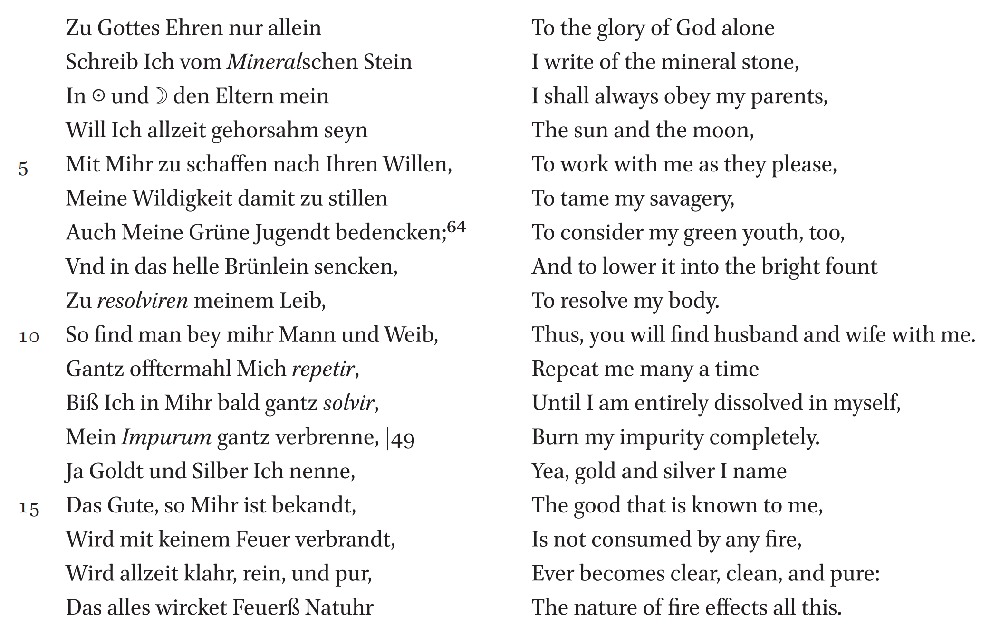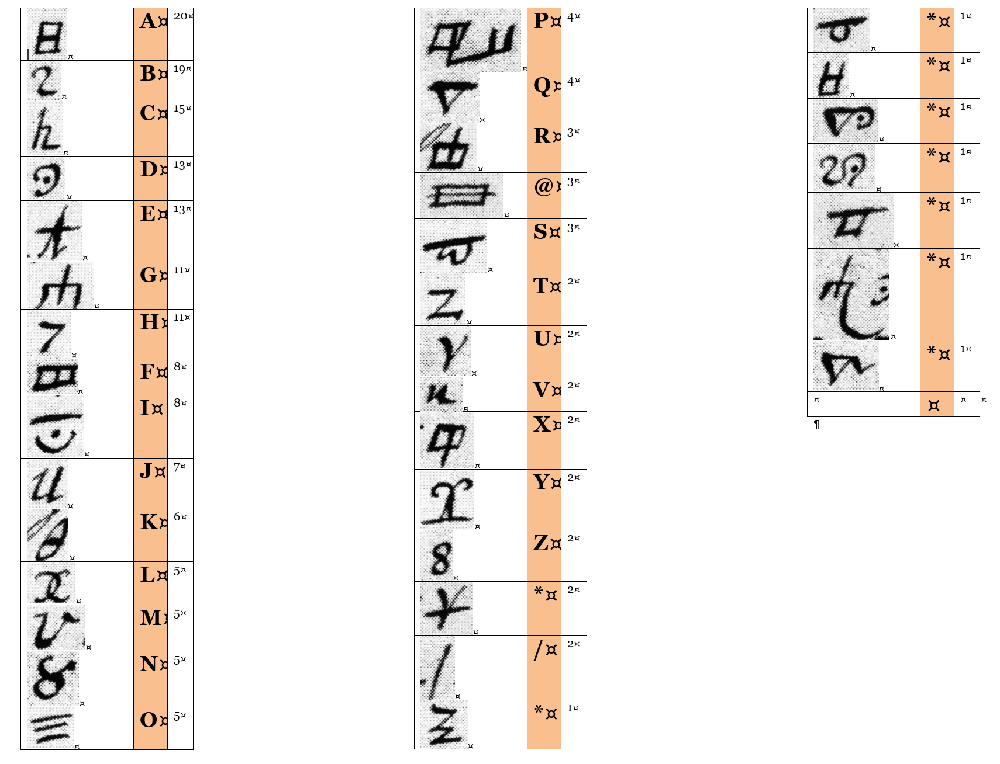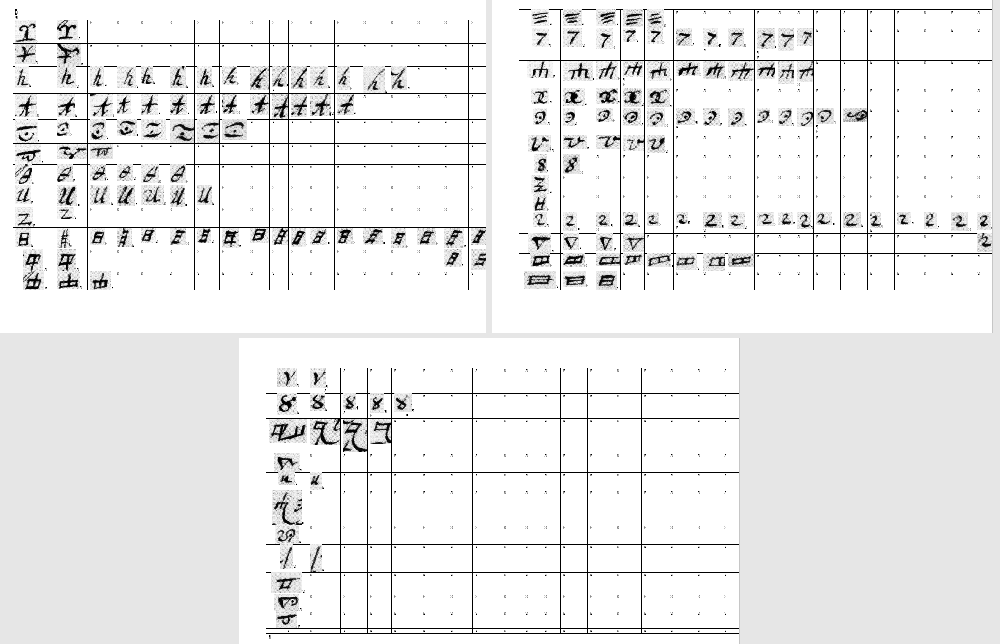Der polnische Historiker Rafał Prinke ist in einem alten Manuskript des Hamburger Arztes Benedikt Nikolaus Petraeus auf verschlüsselte Passagen gestoßen. Kann ein Leser diese entziffern?
English version (translated with Deepl)
Wer sich (wie ich) mit dem Voynich-Manuskript beschäftigt, kennt den polnischen Historiker Rafał Prinke. Unter anderem hat dieser mit René Zandbergen und Stephen Skinner ein Voynich-Manuskript-Buch verfasst. 2012 habe ich Rafał bei der “Voynich 100“-Konferenz in der Nähe von Rom persönlich kennen gelernt. Er zählt zu den führenden Experten für die Geschichte der Alchemie und Astrologie und ist laut einem Interview einer der führenden polnischen Genealogen.
Das Gedicht von Martinus de Delle
Rafał hat vor Kurzem eine wissenschaftliche Arbeit mit dem Titel “Learn to Restrain Your Mouth”: Alchemical Rumours and their Historiographical Afterlives veröffentlicht. Darin geht es um ein längeres Gedicht (bestehend aus 500 Zeilen), das bisher einem Martinus de Delle zugeschrieben wurde, der ein Kammerdiener von Kaiser Rudolf II. (1552-1612) gewesen sein soll. Rudolf II. ist in der Voynich-Manuskript-Szene ebenfalls bekannt, da er das Manuskript möglicherweise besessen hat.
Rafał Prinke und sein Ko-Autor Mike Zuber kommen jedoch zum Schluss, dass der besagte Martinus de Delle nie existiert hat und das Gedicht stattdessen von einem anderen Alchemisten der damaligen Zeit verfasst wurde. In ihrer Arbeit präsentieren die beiden eine vollständige Transkription dieses lyrischen Werks.
Als Quelle haben Rafał und sein Kollege die einzige bekannte verfügbare Abschrift des Gedichts verwendet. Diese steht in einem Manuskript, das der Hamburger Arzt Benedikt Nikolaus Petraeus um das Jahr 1700 angefertigt hat. Das Manuskript enthält neben dem Gedicht eine von Petraeus verfasste Einleitung.
Die Petraeus-Kryptogramme
Und jetzt wird es für Krypto-Freunde interessant: Das Manuskript von Petraeus enthält fünf Abschnitte, die offensichtlich verschlüsselt sind. Rafał hat diese fünf Kryptogramme schon vor Veröffentlichung seiner Arbeit einigen Experten gezeigt. Auch ich hatte die Gelegenheit, sie mir anzusehen. Bisher konnte sie keiner dechiffrieren.
Im Folgenden sind die fünf verschlüsselten Passagen aus dem Manuskript aufgeführt. Darunter ist jeweils meine Einschätzung angegeben, die ich seinerzeit (auf Englisch) an Rafał geschickt habe.
#1
You have certainly noticed the word “Tinctur”, which indicates that we deal with something like a recipe. The vertical lines are probably word separators. The number of symbols in the alphabet used is too high for an ordinary substitution cipher. So, there are basicly two possibilities:
- Nomenclator: Some of the symbols (especially, the rarer and more complex ones) stand for complete words. Perhaps, they represent substances that were used as ingredients. The simpler and more common symbols represent letters. If this assumption is correct, the encryption system used is a nomenclator – something very typical for 17th century cryptography.
- Homophonic cipher: Some of the symbols represent the same letter (homophones).
Of course, it is also possible that both options were used at the same time, which results in a nomenclator with homophones.
Solving this cryptogram based only on statistical examinations might be difficult. Perhaps, it is possible to guess a word, which can be used as a crib. Many 17th century nomenclators are sorted in some way, which makes cryptanalysis a lot easier, but this one is not based on numbers, so I see no obvious way of sorting.
#2
This looks like a key. However, I have never seen a key of this kind before and I don’t see an obvious way how to use it.
At first view, it looks like a table listing homophones for each letter. However, the first line doesn’t list the complete alphabet, and then some letters are repeated. This is very unusual for a substitution table. In addition, several symbols in the third and fourth line are repeated, which doesn’t make sense in a substitution table, either.
One possible interpretation is that only the first two lines represent a key. Perhaps, this table that was used in addition another, more complete table in order to use the numbers from 1 to 8 as additional homophones. If this assumption is correct, line 3 and 4 might represent a short encrypted text, e.g., two encrypted words. As the third last letters in both lines ar identical, it might be possible to guess them. Taking into account that the cleartext is written in Latin, these three letters might be IUS or IUM.
#3
This text could be encrypted in an ordinary substitution cipher, perhaps with a few homophones. A small nomenclator is another possibility. As no word boundaries are indicated, guessing words is difficult. Statistical properties might help. Considering that we deal with a German message, the three most frequent letters (h, 2 and a non-standard symbol) might stand for E, N and I. Trying different combinations and applaying them on the ciphertext might lead to recognizable words, but my tries have not succeeded.
#4
Here, the string “h2wh” looks interesting. h and 2 are frequent letters, w is not. Perhaps, this string stands for ENDE. However, I didn’t get much further when I tried to continue based on this guess.
#5
This is a short message. It’s difficult to say where the word boundaries are. The last word (MUh2hu2 or h2hu2) might be usable as a pattern search. With CrypTool 2 I received the following German words:
MUh2hu2
ahnende
Beugung
bietest
böseste
Dienern
Galilei
knetest
loseste
mietest
nietest
Porträt
Reisigs
rietest
siedend
tönende
Tresens
vertrat
Wiesels
zeitigt
zertrat
Zeugung
h2hu2
No German word with this pattern.
To my regret, nothing really convincing showed up (GALILEI looks nice, but I doubt that this guess is correct). Perhaps, you can make guesses based on your knowledge of the potential content.
Lösungsansätze
Rafał ist sich keineswegs sicher, dass die fünf Kryptogramme überhaupt lösbar sind. Für den Fall, dass es möglich ist, hat er hilfreiche Vorarbeit geleistet. Hier ist zunächt eine Transkriptionstabelle für Kryptogramm #3:
Die folgende Grafik zeigt eine Häufigkeitsanalyse, ebenfalls zum dritten Kryptogramm:
Außerdem gibt es hier noch eine von Rafał zur Verfügung gestellte Excel-Datei mit einer Transkription sowie einer editierbaren Ersetzungstabelle.
Schafft es jemand, die Kryptogramme mit diesen Hilfsmitteln zu lösen?
Follow @KlausSchmeh
Further reading: Unsolved: The encrypted notebook of painter Ludwig Göbel
Linkedin: https://www.linkedin.com/groups/13501820
Facebook: https://www.facebook.com/groups/763282653806483/











Kommentare (11)